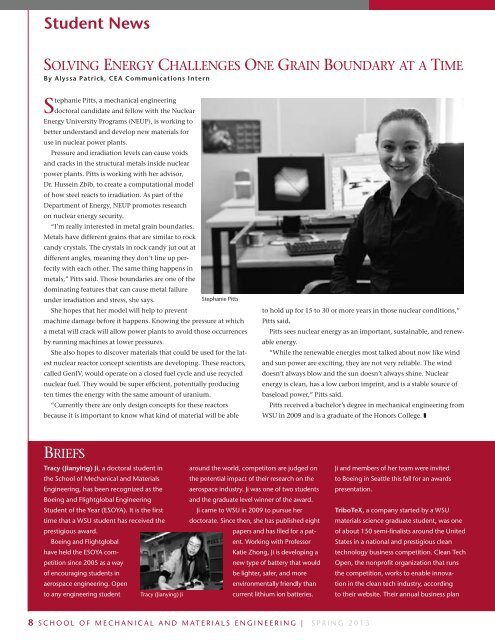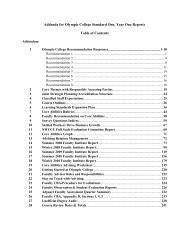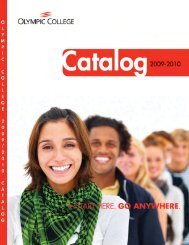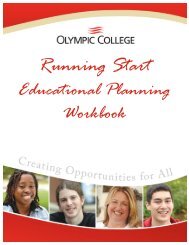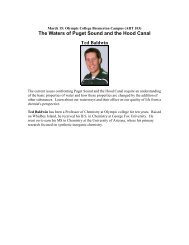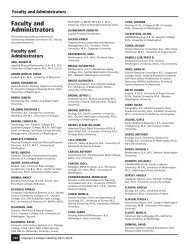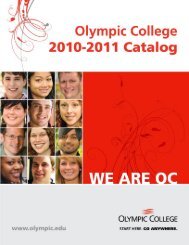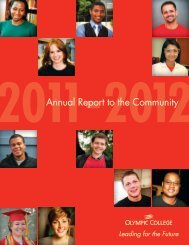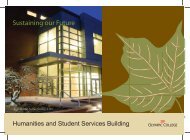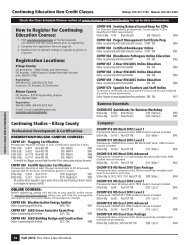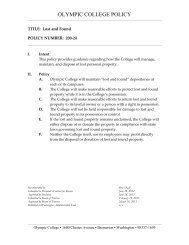Full MME Newsletter - Washington State University College of ...
Full MME Newsletter - Washington State University College of ...
Full MME Newsletter - Washington State University College of ...
Create successful ePaper yourself
Turn your PDF publications into a flip-book with our unique Google optimized e-Paper software.
Student News<br />
Solving Energy Challenges One Grain Boundary at a Time<br />
By Alyssa Patrick, CEA Communications Intern<br />
Stephanie Pitts, a mechanical engineering<br />
doctoral candidate and fellow with the Nuclear<br />
Energy <strong>University</strong> Programs (NEUP), is working to<br />
better understand and develop new materials for<br />
use in nuclear power plants.<br />
Pressure and irradiation levels can cause voids<br />
and cracks in the structural metals inside nuclear<br />
power plants. Pitts is working with her advisor,<br />
Dr. Hussein Zbib, to create a computational model<br />
<strong>of</strong> how steel reacts to irradiation. As part <strong>of</strong> the<br />
Department <strong>of</strong> Energy, NEUP promotes research<br />
on nuclear energy security.<br />
“I’m really interested in metal grain boundaries.<br />
Metals have different grains that are similar to rock<br />
candy crystals. The crystals in rock candy jut out at<br />
different angles, meaning they don’t line up perfectly<br />
with each other. The same thing happens in<br />
metals,” Pitts said. Those boundaries are one <strong>of</strong> the<br />
dominating features that can cause metal failure<br />
under irradiation and stress, she says.<br />
Stephanie Pitts<br />
She hopes that her model will help to prevent<br />
machine damage before it happens. Knowing the pressure at which<br />
a metal will crack will allow power plants to avoid those occurrences<br />
by running machines at lower pressures.<br />
She also hopes to discover materials that could be used for the latest<br />
nuclear reactor concept scientists are developing. These reactors,<br />
called GenIV, would operate on a closed fuel cycle and use recycled<br />
nuclear fuel. They would be super efficient, potentially producing<br />
ten times the energy with the same amount <strong>of</strong> uranium.<br />
“Currently there are only design concepts for these reactors<br />
because it is important to know what kind <strong>of</strong> material will be able<br />
to hold up for 15 to 30 or more years in those nuclear conditions,”<br />
Pitts said.<br />
Pitts sees nuclear energy as an important, sustainable, and renewable<br />
energy.<br />
“While the renewable energies most talked about now like wind<br />
and sun power are exciting, they are not very reliable. The wind<br />
doesn’t always blow and the sun doesn’t always shine. Nuclear<br />
energy is clean, has a low carbon imprint, and is a stable source <strong>of</strong><br />
baseload power,” Pitts said.<br />
Pitts received a bachelor’s degree in mechanical engineering from<br />
WSU in 2009 and is a graduate <strong>of</strong> the Honors <strong>College</strong>. ❚<br />
Briefs<br />
Tracy (Jianying) Ji, a doctoral student in<br />
the School <strong>of</strong> Mechanical and Materials<br />
Engineering, has been recognized as the<br />
Boeing and Flightglobal Engineering<br />
Student <strong>of</strong> the Year (ESOYA). It is the first<br />
time that a WSU student has received the<br />
prestigious award.<br />
Boeing and Flightglobal<br />
have held the ESOYA competition<br />
since 2005 as a way<br />
<strong>of</strong> encouraging students in<br />
aerospace engineering. Open<br />
to any engineering student Tracy (Jianying) Ji<br />
around the world, competitors are judged on<br />
the potential impact <strong>of</strong> their research on the<br />
aerospace industry. Ji was one <strong>of</strong> two students<br />
and the graduate level winner <strong>of</strong> the award.<br />
Ji came to WSU in 2009 to pursue her<br />
doctorate. Since then, she has published eight<br />
papers and has filed for a patent.<br />
Working with Pr<strong>of</strong>essor<br />
Katie Zhong, Ji is developing a<br />
new type <strong>of</strong> battery that would<br />
be lighter, safer, and more<br />
environmentally friendly than<br />
current lithium ion batteries.<br />
Ji and members <strong>of</strong> her team were invited<br />
to Boeing in Seattle this fall for an awards<br />
presentation.<br />
TriboTeX, a company started by a WSU<br />
materials science graduate student, was one<br />
<strong>of</strong> about 150 semi-finalists around the United<br />
<strong>State</strong>s in a national and prestigious clean<br />
technology business competition. Clean Tech<br />
Open, the nonpr<strong>of</strong>it organization that runs<br />
the competition, works to enable innovation<br />
in the clean tech industry, according<br />
to their website. Their annual business plan<br />
8 School <strong>of</strong> Mechanical and Materials Engineering | Spring 2013


